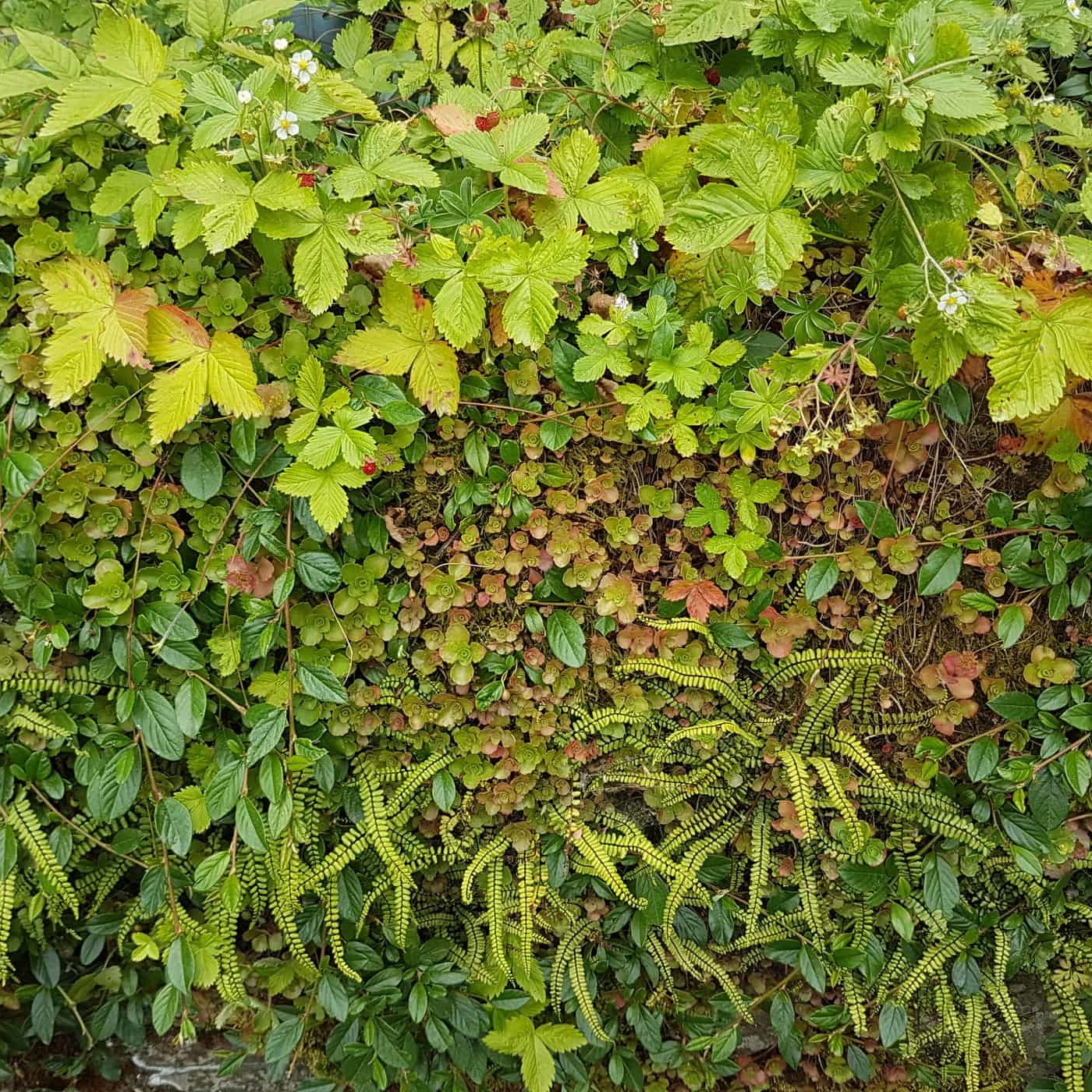Woodland-inspired ground cover plants for semi-shade
Partial or semi-shade is generally defined as a site receiving three to six hours per day of direct sun at midsummer. This could mean the sun moved behind a building or trees, or dappled shade from a light canopy of trees and shrubs. The more sunlight a spot gets, the more flower power you can expect to be achievable though the year. In lower-light levels and dry shade, foliage form and texture are more reliable sources of interest than flowers alone. By choosing the right ground cover plants for semi-shade, they will perform, suppress weeds, look beautiful, and provide a habitat for wildlife in your garden.
Sissinghirst
Provided the site is not too dry, broad drifts of larger perennials can be used as ground cover plants for semi-shade. Beneath the coppiced hazel at Sissinghurst, a sea of early spring bulbs and primula are followed by larger perennials such as the shuttlecock fern (Matteuccia struthiopteris).

Euphorbia amygdaloides var. robbiae (Mrs Robb’s bonnet), Geranium sylvaticum ‘Album’ (white wood cranesbill), and biennials such as the acid green Smyrnium perfoliatum (perfoliate alexanders) spread themselves about. Photos taken in late May 2019 at NT Sissinghirst Castle Garden.
RHS Harlow Carr
In a much smaller hazel coppice at RHS Harlow Carr, smaller ground cover plants for semi-shade create a tapestry. There is Saxifraga hirsuta which is similar to ‘London Pride’, Vinca minor ‘Evelyn’ has white flowers and variegated leaves that make it stand out a little in a sea of green. An ivy with tear-drop shaped leaves aptly named Hedera helix ‘Teardrop’ gently creeps and catches the light on its glossy foliage, suited to garden use being much less vigorous than the species. In the lighter shade spots Campanula poscharskyana ‘Stella’, a siberian bellflower, offers blue starry flowers. Pachyphragma macrophyllum sending up white cress-like flowers before the foliage emerges, just as the snowdrops are fading in March and April.
The tough-but-dainty-looking maidenhair spleenwort fern, Asplenium trichomanes, is evocative of shady crags and mossy dry stone walls, and fits the low-growing scheme. Some patches of Omphalodes verna ‘Alba’ (creeping forget-me-not) form a mat of folliafe from which sprays of white flowers shine in spring. While light levels are high before bud-break early in the year, sprinklings of naturalised early bulbs bring floral interest, such as the creamy white of Narcissus ‘W.P. Milner’, alongside early-flowering summer dormant perennials such as Primula vulgaris ‘McWatt’s Cream’.
While not everyone has a hazel coppice in their back garden, many of these ground cover plants for semi-shade are perfectly suited to urban gardens partially shaded by fences, buildings, and tree. For specifically urban-inspired shady plants have a look at our blog from a few months back. As Beth Chatto said; “right plant in the right place”, and it really is the key to a beautiful garden that works.
Owen Hayman
Owen joined the Bestall & Co planting and aftercare team in spring 2019. He is an RHS qualified horticulturist, holding a full Level 3 Diploma in Horticulture, and recently came in the top 3 at the Northern Regional Final of The Young Horticulturist of the Year 2019. After first doing a foundation diploma in Fine Art, he went on to gain a degree and masters in Plant and Soil Science from the University of Sheffield in 2014. Owen worked as a researcher on various field research projects in Alaska, Panama and Borneo. When not away in the field, he became obsessed with visiting gardens and nurseries across the British Isles and the Netherlands, developing his own garden, and then taking on a walled allotment garden as a personal project. He realised his true passion was in horticulture, and so moved away from academia and into the world of specialist plant nurseries and professional gardening.
Owen is now studying the Wisley Diploma, but continues to write articles for us on a monthly basis, and we're delighted to maintain contact with such a passionate and knowledgable plantsman.






